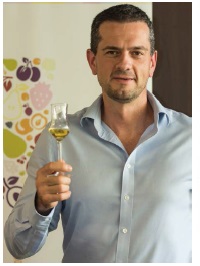
I often get the question, can you make cocktail out of pálinka. Of course, you can, very fine, mixed drinks can be made out of our prestigious national spirit, but the reasons, why these cocktails have not found more ground, are diverse. One reason, why these creations are less known, because the typical pálinka lovers – similarly to the wine lovers – rarely mix their favourite drink into a cocktail, since they do not consider these creations exciting enough. And on the other side the quality pálinkas, which share the well-balanced, high quality, fruity flavour profile, and would be best suited for cocktail making as well, do not make it to the bartender’s hand as cocktail raw material, because of their price. There is a third factor as well, which every serious, internationally well-known spirit category uses to maximize benefit, yet the local pálinka manufactories do not exploit it enough – this is the fashion of long drinks, let just think of the following categories: gin, rum, whiskey.
Where would be these categories, if they wouldn’t be served with tonic, cola, ginger or as a base ingredient for one of the cocktails? These ‘long’ drinks can be easily prepared, look good in the customers’ hand or on the table, there is no need to order them every minute, like the short ‘shot’ drinks, and they reach out for the younger generation and the consumption of such drinks is also ‘trendy’.
Let’s have a closer look on the ‘long drink’ subject with our pálinka! For this purpose we should use a less pronounced, flavoursome pálinka as raw material, the grape marc pálinkas and the very characterful or ‘sharp’ products shall be avoided, the drier or actually sweeter, aromatic, fruity styles could be quite good choices, similarly to the so called bedded products. Just be open-minded, when it comes to the experimentation, topping up with tonic, ginger ale, ginger beer or ice tea variations can be a success and let’s not forget about the summer’s hip drinks, the lemonades. This later is surely a success, especially if we make it with home-made syrup, juice!
For instance a floral, sweetish grape pálinka or apple pálinka perfectly enhances the fresh, citrus-boosted elderflower juice. Yet an important detail, which is often overlooked with the long drinks, the beverage must be made from very cold, with ice cubes freshly taken out of the freezer, so it can chill down the cocktail suddenly, that it does not melt!
If we have any practice or enthusiasm in the creation of classic cocktails, we might as well enchant our guests with advanced preparations, for this we need a few equipments however. It is worth to keep in mind the oldest, yet still valid rule to consider regarding the making of cocktails (originally it applied to the ancient punch drinks), whereby the good cocktail is all about the sour, the sweet, the strong and the weak components. If we check the classical creations, all are built on this (Daiquiri, Margarita, Whiskey Sour, Cosmopolitan, Mojito…), but the world famous, modern variations also follow this rule to a certain degree.
Let’s look an example from the world of pálinka, one of my favourites, which I made first in the beginning of the year 2000:
Lady Marmalade: 4 cl Hungarian Apricot Pálinka, 2 small spoons of apricot jam, 2 cl freshly squeezed citrus juice.
Put all three ingredients into a shaker with plenty of ice in it (when melting this will give the ‘weak’ component) and shake them well. Pour it through a strainer (through a tight metal strainer) into a chilled glass, for decoration put a citrus peel spiral on the top of the cocktail, but a discrete edible flower can also be a worthy decoration.
Csaba Gulyás


